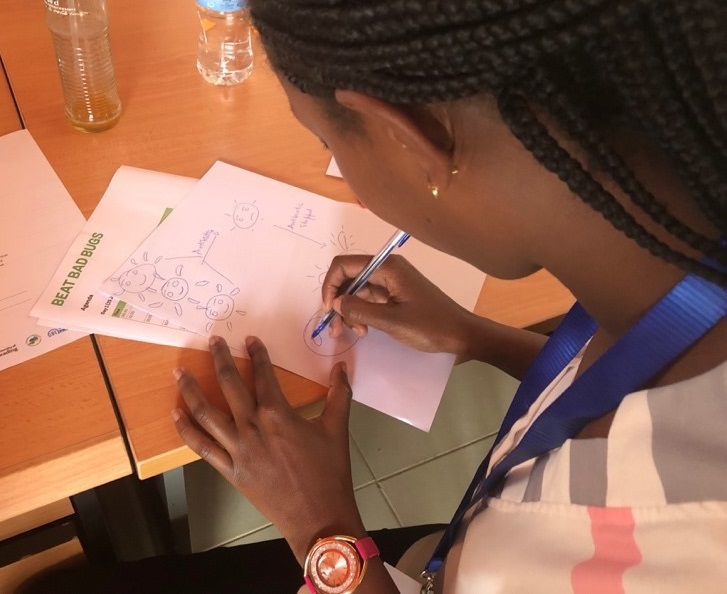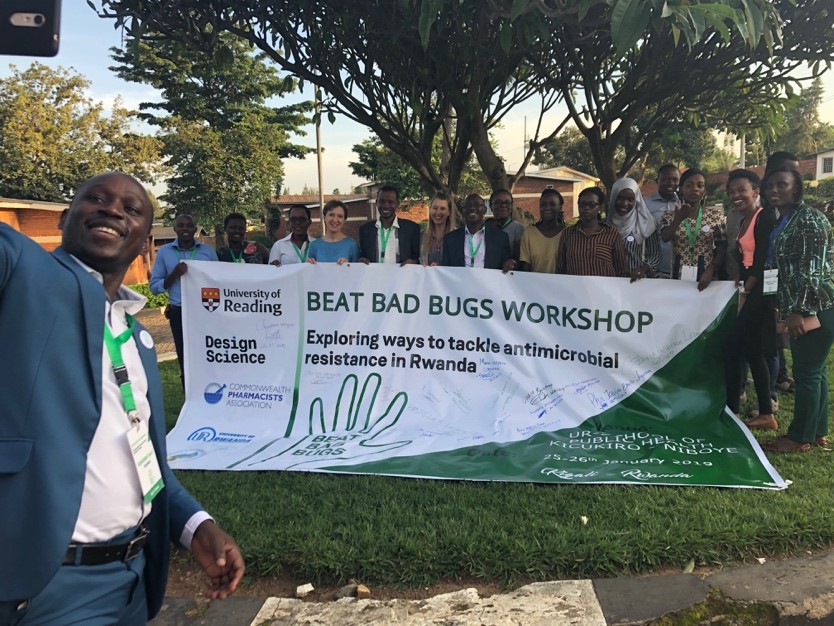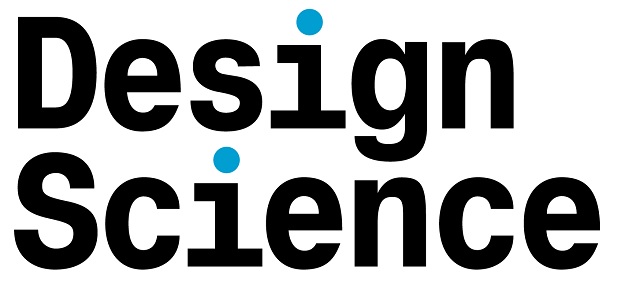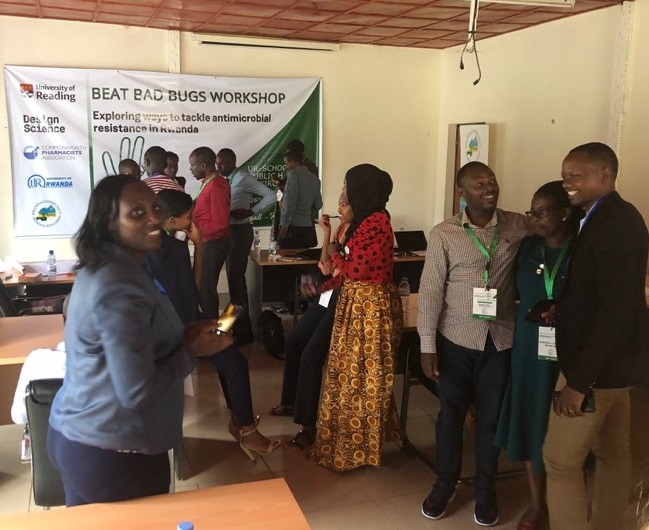As the government unveils its 5-year national action plan for tackling antimicrobial resistance , a University of Reading team has been in Rwanda, using design thinking to explore ways of explaining the dangers of drug-resistant bugs in the context of a community pharmacy. Professor Sue Walker, the project lead, explains more here.
Antibiotics have changed the world and saved millions of lives, but these vital medicines aren’t working as well as they used to because microbes are developing resistance to antibiotics. Antimicrobial resistance (AMR) is one of the greatest challenges facing humanity today and finding ways to tackle it is a priority for governments, research organisations and policy-makers worldwide.
The power of design
Design thinking disrupts – it gets people thinking in different, often innovative, ways. Add to that the role that design plays in clear communication, and it’s a powerful combination.
Our Global Challenges Research Fund (GCRF)-funded partnership-building project has brought together Design Science, the Commonwealth Pharmacy Association, the University of Rwanda and the Rwandan Community Pharmacists’ Union to help address the problem of AMR in the context of community pharmacies.
‘Beat Bad Bugs’, the starting point for this work, is a communication design concept, developed by Design Science. This is part of the AHRC-funded Information Design and Architecture in Persuasive Pharmacy Space (IDAPPS) project (you can view this online exhibition to find out more about previous work we did as part of this project to promote awareness of AMR in a community pharmacy in Reading, in 2018.)
Beating bad bugs in Rwanda

At our Ideas Lab in Kigali we worked with community pharmacists and patients to explore ways of communicating information about AMR, and specifically about the misuse of antibiotics in community pharmacies. Through collaboration and co-design, the workshop participants came up with three messages to communicate:
– Avoid antibiotics if you don’t need them
– Finish your antibiotic course
– Talk to your pharmacist
Those attending were also asked to think about how best to engage people with these messages, including at sports centres, in schools and via social media.

We are now planning a second workshop in Rwanda to discuss ideas from the design team and to get feedback from pharmacists, doctors and social workers. We are proud to support the new national action plan through global partnership, and finding ways to engage the public on AMR and to demonstrate appropriate use of antimicrobials. Co-design and collaboration is key to getting this right, and we have an amazing team working to make this happen.




Sue Walker is Professor of Typography and Graphic Communication at Reading where she is Director of both the AHRC-funded Design Star Doctoral Training Centre and of Collections and Archives in Typography.
She is interested in the analysis and description of graphic language, in particular the relationship between prescription and practice in everyday documents, typographic design for children and information design in public service. This summer she will curate an exhibition at the House of Illustration in London, Picturing Science, using archive materials from the Otto and Marie Neurath Isotype Collection of children’s books held in Reading’s Typography Archive.

